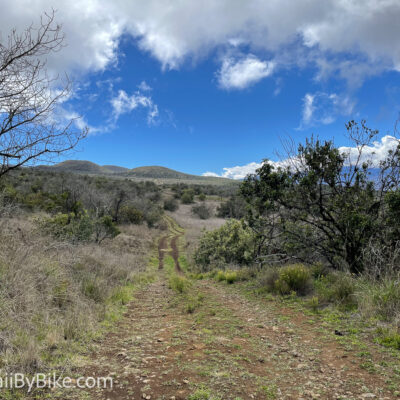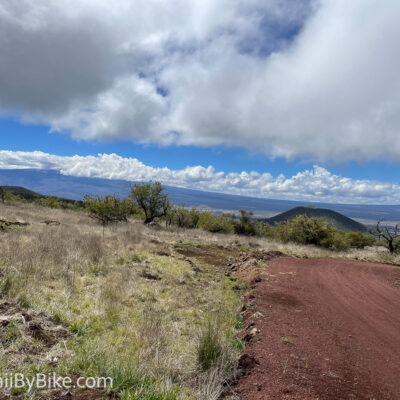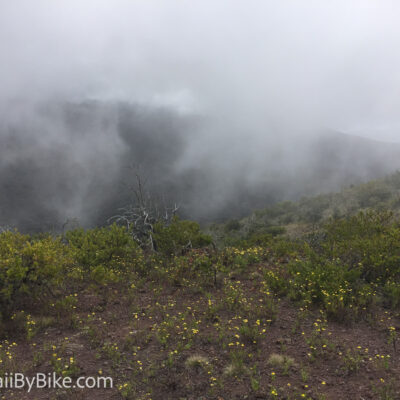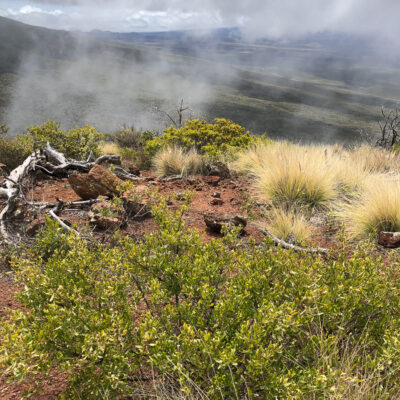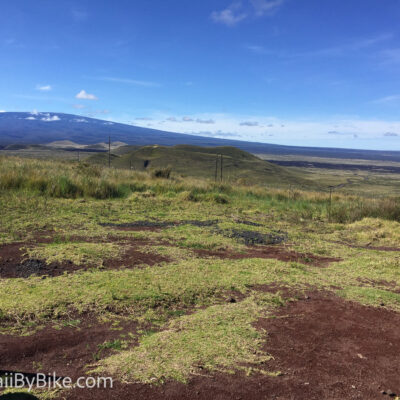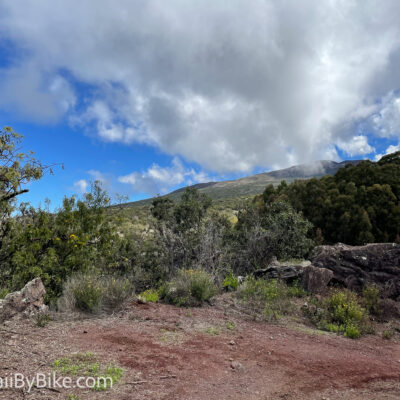Kilohana Cabin – Mountain Bike Double Track
Mauna Kea Forest Reserve
Hilohana Hunters Station to Cabin (and beyond)
With forty miles of ‘double track’ four-wheel drive roads, Mauna Kea Forest Reserve offers plenty of time on your mountain or gravel bike. Located on the western slopes of Mauna Kea, this location affords a plethora of fantastic views, reliably excellent riding weather and a really good workout. The riding is challenging. Few places in the island chain allow cyclists the opportunity to ride longer distances at elevation and build cardio strength.

The first thing you’ll notice is the light, dry air. After taking that first deep breath in, turn and look at the enormous expanding island below you stretching from Maui across the channel in the north, down the entire Kohala coastline, inland to Pu‘u wa’awa‘a and Hualālai, and come to rest upon the sturdy Mauna Loa delta. Within the island chain, there are few locations where you can experience this feeling of the space while biking.
The riding area consists of two jeep roads, R-10 (Skyline road) and R-1 (the Na Ala Hele Mauna Kea access road) with total length one-way is 40.4 miles (users can ride in both directions). Both roads start out as mostly packed and slightly tacky red cinder/earth, with pockets of loose gravel and dusty enclaves (currently winter 2021). However, weather and erosion are constant. Be prepared for some very loose, a bit gnarly, but passable (or walkable) rocky sections. Riders can enter from either the Kilohana Checkin Station on old Saddle Road, or from Maunakea Access Road. The elevation ranging from 7,000 feet to 10,000 and impacts the air density, temperature and conditions. There are pit toilets at the hunter check-in stations. Please check-in for both safety and so that the gov knows the amount of use and can allocate maintenance and upgrade funding.
While this may sound like too much for beginner riders, I encourage you to try. Mauna Kea Forest Reserve’s multiple facets make the location special, all of which make it easy to distract yourself from the task in front of you. The phenomenal views of the coast, ocean, and mountains are the obvious distraction.
Local volunteers and land stewards have painstakingly replanted the native forest, creating a native Hawaii dry forest habitat. This effort has replenished the biosphere, creating an environment for the native flora and fauna. If youʻre lucky, youʻll hear and maybe see, a Palila, endangered native bird.
Even the road is interesting, with enough corners and twists to keep your curiosity going, and motivation to make the next bend. As you climb, youʻll traverse through microclimates, experiencing dessert to alpine weather. Starting out with fine, red dusty earth, the road leads through hot sunny pockets in arid dusty conditions, caking you with fine, red dusty earth. The road winds to the northern corner of Maunakea, where temperatures drop and the landscape exposes cool rolling misty fog over hills and pu‘u. The powdery red earth turns to sticky dark clay and chonky rocks are more exposed from erosion. Every time you stop to catch your breath, take a moment to listen to the defending silence broken up by the sound of the wind and interrupted by native bird calls.
The most obvious reward is the descent, “super fun.” For anyone who has mainland bike park fever, this is as close youʻll get to those rapid descents offered by parks. You wonʻt be disappointed by the fun, flowy way down. Itʻs even better cuz you earned it.
